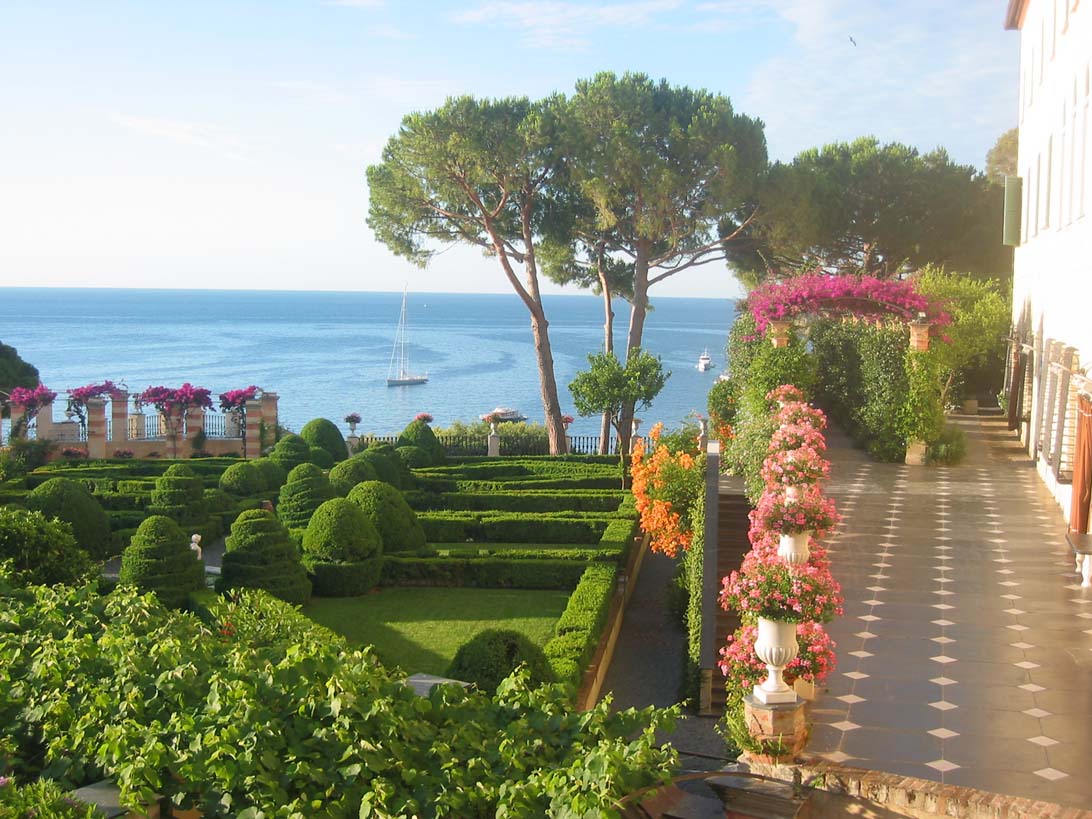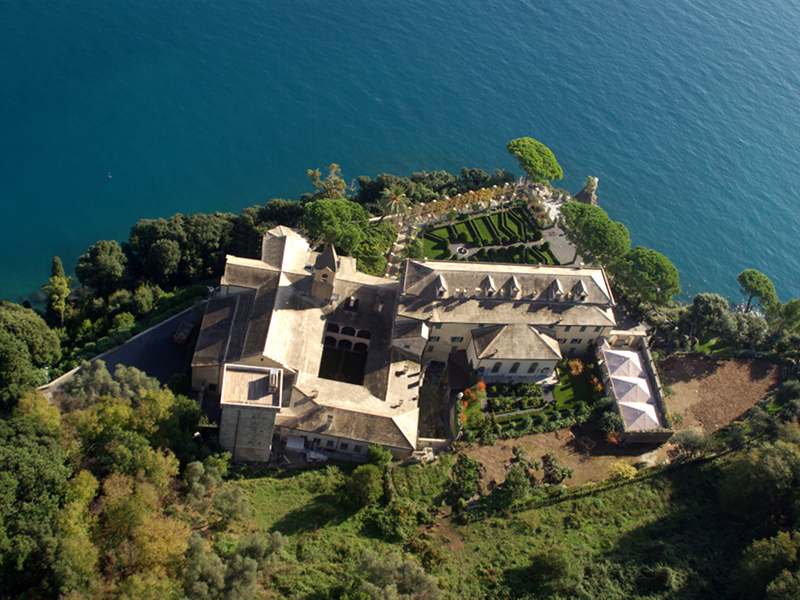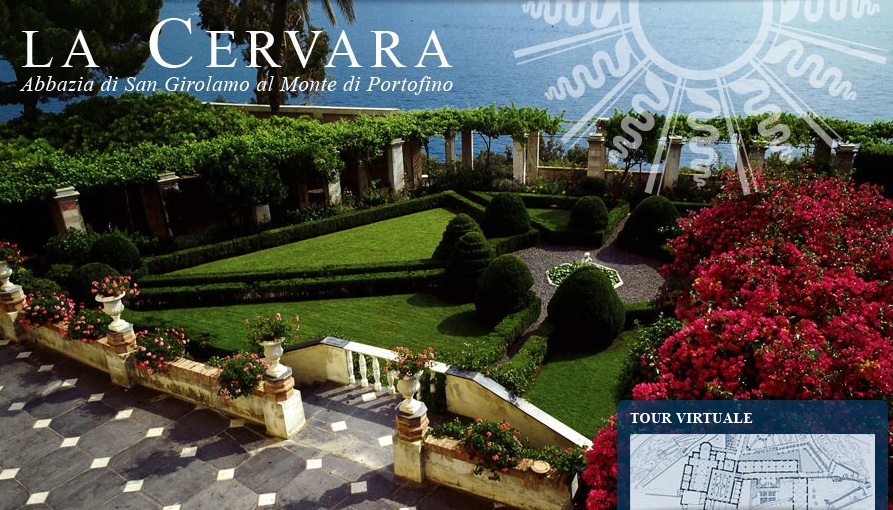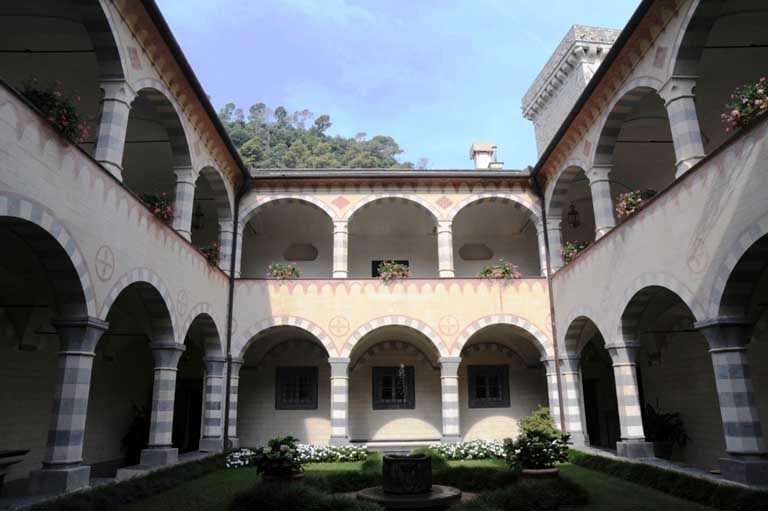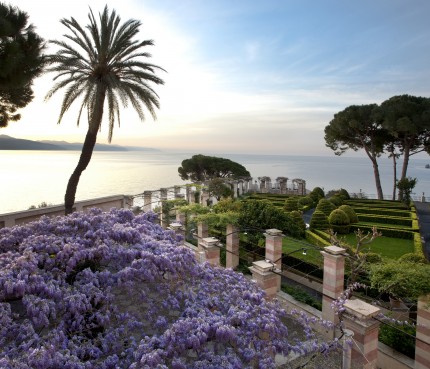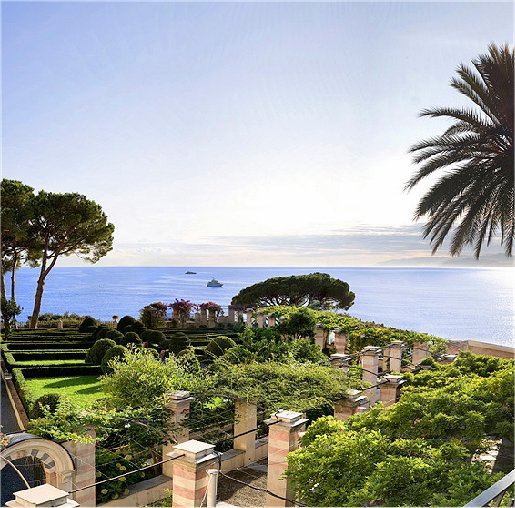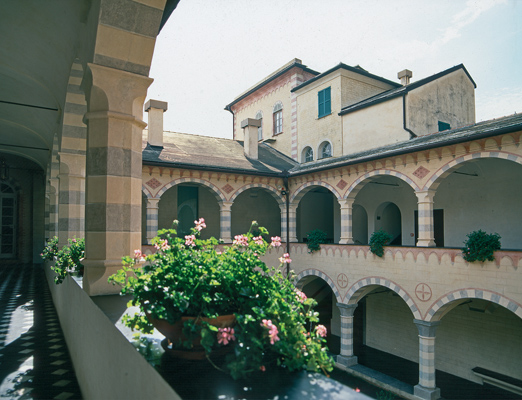
Cervara Monastery, San Gerolamo Abbey on Portofino Mountain
This post is also available in:
 Italiano (Italian)
Italiano (Italian)
The origin of the Abbey dates back to the summer of 1361 when the first stone for the construction of the new monastery dedicated to St. Jerome was laid. The authors of the project, also the first inhabitants, were the Benedictine monks to which, over the following centuries, it is owed the enormous prestige reached across Europe.
The monastery was visited by Francesco Petrarca, Saint Catherine of Siena, the Popes Gregory XI (1376), Urban VI and Pius VII; and again by Don John of Austria, the famous leader who defeated the Turks in Lepanto (1574), by the writer Alessandro Piccolomini and Guglielmo Marconi. The most interesting moments of its history are those of the sixteenth century where the Abbey was the prison of Francis I, King of France, defeated in Pavia in 1525 by Charles V of Spain, and imprisoned in the tower-prison overlooking the sea.
From this enchanting place, the Abbey offers a splendid view of the Gulf of Tigullio.
THE GARDENS
The complex consists of several spaces, including the Church of San Girolamo, a Saracen tower, the sixteenth-century cloister quadrangle enclosing a small Italian garden, the chapter house, the emperor’s gallery alongside a series of rooms, the court of the wisteria, the gardenias garden, the herb garden, a citrus grove, and a terrace.
In addition to the landscape, the context is very suggestive. It includes oaks, pines of Aleppo, arboreal heather, arbutus, and cistus flowers with terraces (called “bands”) planted with olive trees. The monastery shows the fascinating small indoor gardens. Among the most important we can find the Italian one, consisting of lawn divisions that surround the central fountain, bordered by boxwood (Buxus sempervirens) made with sophisticated topiary art, and surrounded by a pergola and columns painted. Among the plants we can find here are a monumental wisteria (Wisteria sinensis) in the courtyard, false jasmine (Trachelospermum jasminoides), the bougainvillea, pink capers, the bignonia, the screws, the shaft of pink pepper (Schinus molle), camellias, roses, hydrangeas, strelitzias, the Agave americana, a Chinese palm (Trachycarpus fortunei).
The Mediterranean vegetation leads a seductive trail of scents, with plants of capers, pine nuts, citrus, while the small garden of aromatic and medicinal plants is a tribute to the ancient tradition of botanical knowledge that was brought on in the abbey.
This post is also available in:
 Italiano (Italian)
Italiano (Italian)
Contatti
Via Cervara, 10 - Santa Margherita Ligure(GE)
0185 293139
Altre info
calendario visite guidate sul sito internet

